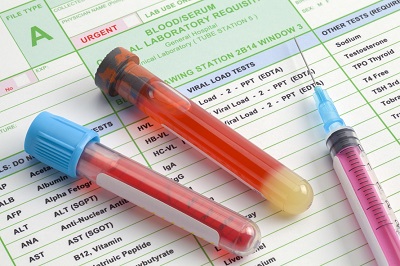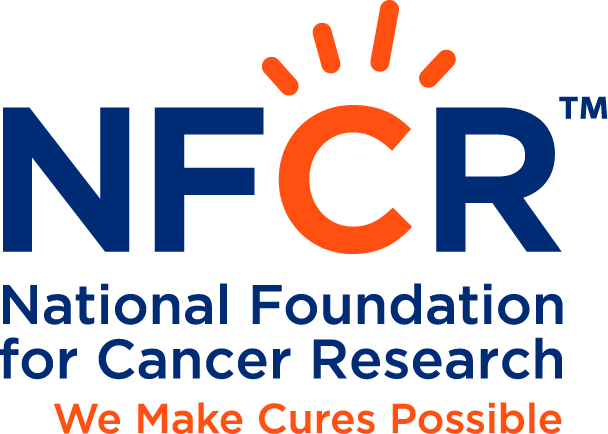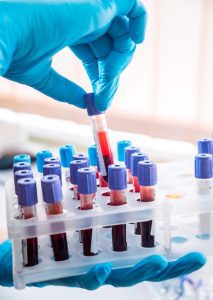Non-Invasive Liquid Biopsy Uncovers Key Information to Treat Cancer

A liquid biopsy can provide valuable insight into how to best fight cancer. This noninvasive diagnostic is particularly helpful for patients who cannot undergo a surgical biopsy or whose tumor sample has been exhausted. In the not-too-distant future, liquid biopsies may be used to guide cancer treatment decisions and even screen for tumors that are not yet visible through imaging.
Liquid biopsies are a non-invasive alternative to surgical biopsies which enables doctors to discover a range of information about a tumor through a simple blood sample. In addition to providing a current picture of a patient’s cancer, liquid biopsies can be used for early detection of cancer, to monitor responses to treatment, give an early warning about possible recurrence and help explain why some cancers are resistant to treatment.
New study released by Dr. Wei Zhang
NFCR-funded scientist Dr. Wei Zhang of the Precision Oncology Center of Wake Forest Baptist Comprehensive Cancer Center (WFBCCC) just released the latest results of his study using liquid biopsies in a paper entitled “Circulating mutational portrait of cancer: manifestation of aggressive clonal events in both early and late stages” which was published in the Journal of Hematology & Oncology.
In this study, Dr. Zhang and his team isolated circulating tumor DNA (ctDNA) from the plasma of 177 patients diagnosed with cancer at both early and advanced stages. The majority of these patients (103 patients) had lung cancer, while the remaining 74 patients had been diagnosed with other solid tumor cancers including head and neck, colorectal, pancreatic, gastric and other cancer types. The team then performed next generation DNA sequencing to identify mutations in a panel of key cancer-causing genes from the plasma samples. Key findings include:
Mutations in TP53, EGFR, and KRAS genes were most prevalent in this study, and mutations in BRCA1, BRCA2, and ATM were found in 18.1% of cases.
- Mutation rates (number of mutations) of ctDNA were similar in early (I and II) and late stage (III and IV) cancers.
- Patients with higher mutation rates had significantly higher mortality rates.
- Lung cancer of never smokers exhibited significantly higher ctDNA mutation rates as well as higher EGFRand ERBB2 mutations than ever smokers.
- Mutations of key genes found in the tumor tissue could remain in circulation even after frontline radiotherapy and chemotherapy, suggesting these mutations represented resistance mechanisms.
- Five lung cancer patients known to have EGFR mutations in their tumor were monitored through multiple plasma sampling and ctDNA tests over time. Results showed distinct changes in ctDNA mutation portraits that are consistent with cancer progression or response to EGFR drug treatment. This experiment further substantiated the benefits of repeated liquid biopsy as a substitute of invasive tumor biopsy for continued disease monitoring and treatment adjustment based on changes in gene mutations of the tumor.
Bench to bedside: Integrating research into today’s treatments
Dr. Zhang’s research demonstrates that liquid biopsy can be an effective, non-invasive, pain-free tool to identify driver mutations or mutations that sensitize or resist treatments as well as monitor cancer progression. Detection of ctDNA (circulating tumor DNA) in a liquid biopsy can also be a non-invasive early detection method for screening high risk populations such as smokers leading to real-time changes in treatment.
In certain instances, such as with many lung cancers, new gene mutations occur as the cancer is treated or even progresses. To assess these changes, new tumor sample is needed, but repeated surgical biopsies are risky, painful and often times, simply not feasible to obtain. On the other hand, a liquid biopsy would allow doctors to obtain multiple samplings over a period of time easily and without harm to the patient.
Liquid biopsy will become a powerful next generation tool that may lead to a brighter future in patient care‑ one where early diagnosis and the delivery of more effective treatments could be managed with a simple blood draw.



 Mutations in TP53, EGFR, and KRAS genes were most prevalent in this study, and mutations in BRCA1, BRCA2, and ATM were found in 18.1% of cases.
Mutations in TP53, EGFR, and KRAS genes were most prevalent in this study, and mutations in BRCA1, BRCA2, and ATM were found in 18.1% of cases. Dr. Zhang’s research demonstrates that liquid biopsy can be an effective, non-invasive, pain-free tool to identify driver mutations or mutations that sensitize or resist treatments as well as monitor cancer progression. Detection of ctDNA (circulating tumor DNA) in a liquid biopsy can also be a non-invasive early detection method for screening high risk populations such as smokers leading to real-time changes in treatment.
Dr. Zhang’s research demonstrates that liquid biopsy can be an effective, non-invasive, pain-free tool to identify driver mutations or mutations that sensitize or resist treatments as well as monitor cancer progression. Detection of ctDNA (circulating tumor DNA) in a liquid biopsy can also be a non-invasive early detection method for screening high risk populations such as smokers leading to real-time changes in treatment.







